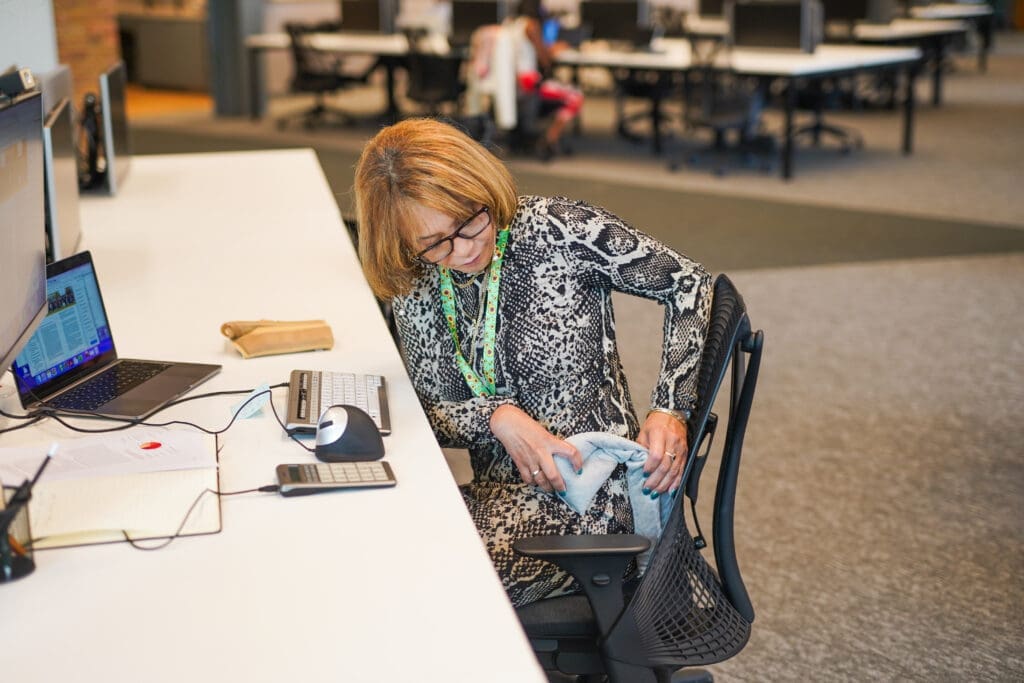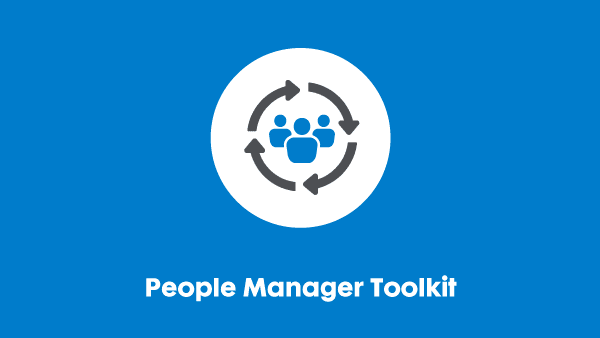Last updated: 14 November 2025
Factsheet – Chronic pain

This resource is part of our Disability Essentials range. You can find the other free resources that are included in this range by clicking here.
What is chronic pain?
The medical definition of chronic pain is pain that lasts for more than 12 weeks despite treatments or medication.
Research frequently suggests that between one-third and one-half of the adult UK population experience chronic pain. This is just under 28 million people over the age of 18 according to research. It also finds that the risk of having chronic pain increases with age and is more prevalent in women.
Chronic pain can include conditions that fluctuate and recur. The type and severity of the pain may also vary between people and for the individual. Some people may find their pain completely disappears with time or new treatment. Others may find their pain gets worse as their underlying condition progresses. However, many people can live full lives and manage their pain very well once they have treatment and support measures in place.
What causes chronic pain?
Many conditions can cause chronic pain; it is not just the result of an operation or injury. In many cases, chronic pain is just one aspect of a condition, and the whole person and their needs should be considered. Some of the more common conditions associated with chronic pain include:
- arthritis
- fibromyalgia
- multiple sclerosis and other neurodegenerative conditions
- endometriosis
- inflammatory bowel disease and irritable bowel syndrome
- headaches and migraines
- cancer
- strokes
- nerve pain
- amputations
- diabetes
- some skin conditions
- post-operative complications
- long-COVID.
Podcast – ‘If you don’t mind me asking…’ with Heather Lacey
In this episode, Lucy and Dan are joined by activist, writer, researcher and public speaker Heather Lacey who talks about her experiences with cerebral palsy, chronic pain, fatigue and mobility issues: “Disabled people are not going away… we are at least one in five of your workforces, and we need to make sure that there’s always things progressing and changing and there’s room for improvement… and we need to continue to keep this at the very top of the agenda,” says Heather.
You can connect with Heather here: Linkedin and Twitter.
How can chronic pain impact a person?
- Pain – this may sound obvious, but a person can experience different types of pain such as sharp, aching, and dull pain. The severity may also vary with some people experiencing ‘breakthrough’ pain. Some pain will be constant, and some will come and go.
- Tiredness and lack of energy often due to a lack of good quality sleep.
- The person may experience side effects from medication to treat their pain.
- Mood and mental health – many people with chronic pain describe being frequently irritable and frustrated, feeling depressed and having lower self-esteem and self-confidence. These often arise due to the pain interfering with everyday activities. In addition, anxiety and a reluctance to do certain activities are common due to a fear of triggering the pain or making it worse.
- Reduced mobility and dexterity can lead to muscle weakness, which can increase pain levels.
- Nausea and a lack of appetite can be common side effects of pain.
What can make chronic pain worse?
There are some common ways that pain can be exacerbated:
- A lack of knowledge and understanding of good pain management. This is common when the cause of the pain is new, such as from an injury or post-operative complication. Chronic pain is also common for people with progressive or fluctuating conditions such as multiple sclerosis or arthritis.
- Waiting for treatment. Waiting lists for specialist referral to services such as pain management clinics can be lengthy. The person is likely to be experiencing poorly managed pain while waiting to be seen, and their pain may be getting worse while they wait.
- Poor pain management due to an inability to implement preventative measures due to work demands. Examples may be prolonged sitting or delays in taking medication due to meetings or eating times.
- Stress – feeling tense can increase muscle tension which can increase pain.
- Lack of pacing resulting in overuse. For example, someone whose role involves climbing ladders and being on their feet all day and who is waiting for a knee replacement. Wrist pain due to prolonged mouse and keyboard use is another common cause.
- Lack of movement and general mobility. We can all feel stiff and sore if we sit in the same position for a prolonged period. This pain and stiffness are often worse and more frequent for people with chronic pain.
- Poor ergonomics – The design and fit of items a person uses can exacerbate their chronic pain.
- Prolonged repetitive movements can cause strain on the body. For example, frequent clicking of a mouse or constantly removing heavy items from a moving production line may cause tendonitis.
Other factors that can exacerbate a person’s chronic pain include:
- infection
- fatigue
- lack of good muscle tone
- if their chronic pain is caused by a progressive condition that is getting worse
- a new injury
- pain elsewhere
- illness.
How is chronic pain managed?
How chronic pain is managed medically will depend on many factors, including the cause, type of pain and severity. In most cases, the aim is to work in partnership with the individual and in a holistic way. There is an emphasis on self-management, which gives the person more control with the expectation that this will reduce the severity of their pain.
Self-management can include some or all of the following, and any measures will be reviewed regularly for effectiveness.
- Exercise – this is also known as ‘keep moving’. Movement and exercise help keep bones and muscles strong. It also helps with mental health and relaxation, which will help reduce pain. The key is to do a little exercise often to gain the most benefits. A clinician may suggest activities such as walking, swimming, cycling and yoga.
- The pacing of activities is essential in pain control.
- Insight – Individuals are encouraged to become more aware of what triggers their pain, makes it worse and reduces it. This can help them plan a daily routine to keep their pain under control.
- Talking therapies and discussing their situation with others can improve understanding and reduce the feeling of being alone. They may also discover new tips that can help.
- Taking pain and anti-inflammatory medication as prescribed. This usually means taking it regularly and before the pain becomes severe. However, some people choose to have increased levels rather than take their prescribed amount of medication to carry out daily activities such as work or driving.
- Relaxation – methods such as meditation can be beneficial.
- Equipment – Some people will use heat pads or TENS machines (transcutaneous electrical nerve stimulation) to help manage their pain, especially during flare-ups. These work by blocking pain signals to the brain. Other people may need wrist supports or mobility aids to help reduce and manage their pain.
- Physiotherapy treatments and exercises can be very effective at helping control chronic pain in many cases.
- Other medication. There is a strong link between pain and poor mental health, with one exacerbating the other and causing a cycle that can be difficult to break. Doctors will often prescribe antidepressants as part of pain management medication to prevent or treat this. Other medication is used to reduce the side effects of medicines used to treat chronic pain or underlying condition.

Impact on work
Many people with chronic pain can manage their condition well with minor adjustments.
- Pain may prevent a person from specific tasks, for example climbing ladders or using a standard mouse and keyboard.
- Living with chronic pain can reduce a person’s energy levels, making completing tasks more difficult and requiring more frequent breaks. This should be discussed with the individual, as many people can manage their pain without it affecting their work.
- Chronic pain can affect a person’s mental health, which can in turn affect their behaviour and performance. Our Mental Health Toolkit has advice about supporting employees’ mental health.
- If the person takes medication, they may need breaks and a private place to take their pain management medication.
- Some pain medications may have side effects that affect a person’s ability to perform specific roles. For example, some medications can make people drowsy and prevent them from working in some safety-critical roles.
- In some cases, individuals who take medication for their chronic pain may have a positive result in workplace drug and alcohol testing. Good workplace policies have guidance on managing this. The testing companies can accurately identify medication and dosages quickly and efficiently, so this should not cause any significant barriers at work for those with chronic or short-term pain.
Legal duties
The Equality Act 2010
In the UK, employers have duties to:
- prevent discrimination, and
- provide reasonable adjustments
for their disabled employees. This means that it is unlawful for employers to treat applicants, job candidates and employees unfavourably because of their disability.
The Equality Act also requires employers to make ‘reasonable adjustments’ for their disabled employees.
Suggested adjustments
- Time allowances – for example, time off for appointments and treatments, or extra breaks to take medication or to do recommended exercises – can mean the person can manage their pain, be effective, and have a good attendance record.
- Flexible working – some people need their medication to take effect before they can carry out normal morning activities. They may also need to complete prescribed exercises before leaving for work and so later start and finish times can be helpful. Others may benefit from working from home when they have flare-ups of their pain, such as the pain that can be experienced by those who use prostheses.
- Training on ergonomics and having workstation assessments can help people manage their pain. By understanding ergonomics, they can be proactive in preventing or reducing flare-up of their pain. In addition, any adjustments to a workstation, including software, equipment or furniture, should be implemented promptly and regularly reviewed. Examples include an adjustable height desk, a well-fitting and supportive chair, or tools that are lighter in weight and fit the size of the hand.
- Other risk assessments such as manual handling and business travel may be appropriate. For example, a person may need longer to recover from a long-haul flight or long drive due to prolonged sitting. Other assessments may need to consider the size and weight of equipment such as laptops, stands and if a trolley case or bag is required.
- Time and space to do self-help measures such as exercises, use additional equipment such as heat pads, meditate, or walk or stand during meetings as needed.
- Be able to schedule meetings so that key medication times are not missed.
- Have a lockable drawer or similar for medication and equipment.
Further information
For more information on suggested adjustments, specific barriers for chronic pain and information about the law, please see our other resources in the Knowledge Hub.
For more detailed information and advice about a specific situation, contact the Advice Service:
- Tel:+44-20-7403-3020
- Textphone: +44-20-7403-0040
- Email: advice@businessdisabilityforum.org.uk
If you require this content in a different format, contact enquiries@businessdisabilityforum.org.uk.
© This resource and the information contained therein are subject to copyright and remain the property of the Business Disability Forum. They are for reference only and must not be copied or distributed without prior permission.

